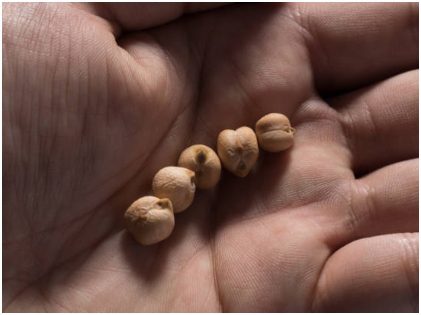Water scarcity is a menace that continues to grow and causes worry to the farmers as it hits the agricultural world the most, especially when the water scarcity is long and recurring. It creates a major dent in the farmers’ yields. For avid farmers in the West, it is important to think about how to grow crops that can survive the harsh weather conditions and require very little water to grow unlike crops like rice, citrus fruits, and almonds that require humongous amounts of water to grow. As erratic rainfall and frequent droughts are becoming the norm instead of a rarity these days, farmers are relying on these crops to cope with the climate change repercussions.
Researchers are also investing time and money to come up with crops that can flourish in dry conditions too, such as using breeding and cross-breeding seeds and creating drought-resistant crop seeds. It is important to know that not all crops are suitable for dry farming. Let's find out about some of the crops that can grow in arid conditions.
Tomatoes
 Tomatoes or the other vegetables belonging to the nightshade family are predominantly sun-loving crops that thrive in drier climates as long as they are established first. Of course, they need a little bit of watering in the first few weeks to thrive and retain the moisture but they are the best examples of plants that do very well in dry conditions. Although, you may get a lower yield in drier conditions the flavors are just unbelievably good.
Tomatoes or the other vegetables belonging to the nightshade family are predominantly sun-loving crops that thrive in drier climates as long as they are established first. Of course, they need a little bit of watering in the first few weeks to thrive and retain the moisture but they are the best examples of plants that do very well in dry conditions. Although, you may get a lower yield in drier conditions the flavors are just unbelievably good.
Grapes
Once the grapes grow long enough having long root systems to ensure they grow long for a sustainable period of time. They are specifically planted in a spot that gets long hours of sun every day. Grapes grow well in soils that are well-drained, sandy, and loamy soil. Ensure not to plant grapes in the soil that holds too much water.
When there is no rainfall, farmers fill up the base of the plant for at least seven to 10 days. They also check the condition of the leaves and fruits to find out whether it needs more water. If the leaves turn yellow it may signify that you are watering them too much.
Okra
 Okra is a staple of most southern dishes and surprisingly it has the power to withstand the heat and survive without needing lots of water. Okra is most suitable when planted in a spot under the glare of the sun. It works best when you plant in sandy, well-draining soil that’s full of organic matter. You'll soon find okra thriving in the soil without the additional watering.
Okra is a staple of most southern dishes and surprisingly it has the power to withstand the heat and survive without needing lots of water. Okra is most suitable when planted in a spot under the glare of the sun. It works best when you plant in sandy, well-draining soil that’s full of organic matter. You'll soon find okra thriving in the soil without the additional watering.
Garlic
When it comes to planting plants in dry conditions, you cannot find a better example than garlic. Garlic grows in arid conditions and in dry weather too. It is planted in the fall season and next harvested in the spring season. In some conditions, it is hauled out just before the advent of the dry season. Most farmers try the mulching technique to weed pressure down and maintain a certain amount of moisture for the last few months.
Rhubarb
Rhubarb gets its drought-tolerant characteristics because of its deep fibrous root systems, but it is also cold-hardy! Farmers plant the seeds of the plant in soil that has a pH level of 5.0 to 6.8. Farmers usually find it feasible that it is sown in an area that gets warmed up by the hot sun rays. It is also important that the soil is well-drained. They are planted in raised beds. A few of the more popular varieties of rhubarb are Macdonald, Victoria, or Valentine. Rhubarb looks like root stubs when they grow up a little.
Chickpea
 Chickpea is one of the most popular legume crops in the world. The popularity of the plant-based diet has led to the farming of chickpeas even more. The fact that it is easy to grow and is drought resistant it becomes a source of sustenance for many small farmers, especially farmers hailing from the dried dryland areas of South Asia and China. Scientists are trying to find out how chickpeas are adapting to increasing periods of dry spells.
Chickpea is one of the most popular legume crops in the world. The popularity of the plant-based diet has led to the farming of chickpeas even more. The fact that it is easy to grow and is drought resistant it becomes a source of sustenance for many small farmers, especially farmers hailing from the dried dryland areas of South Asia and China. Scientists are trying to find out how chickpeas are adapting to increasing periods of dry spells.
We hope that with time there would be more and more plants that make it to this list so that these plants offer a sustainable option for farmers and make the world a better place to live.








